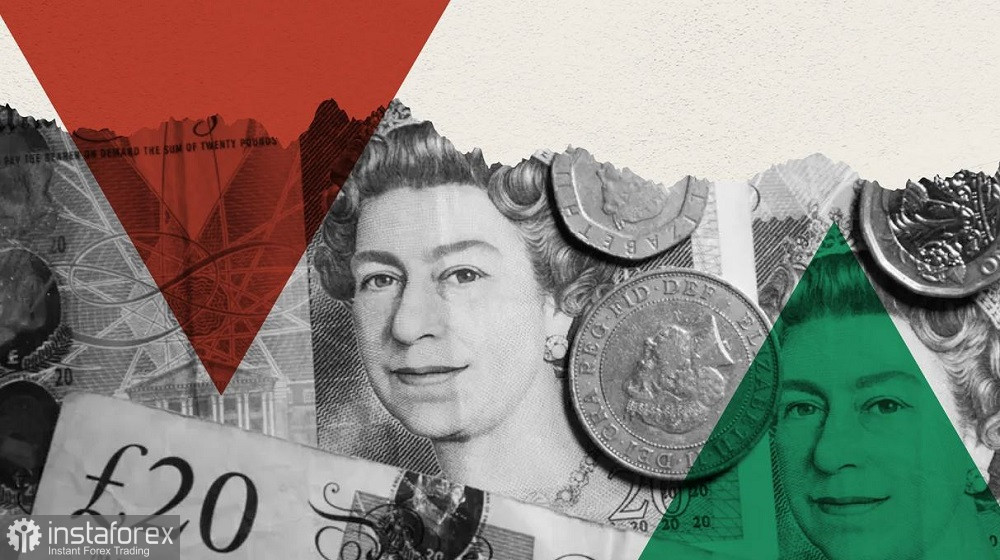On Thursday, November 2, the Bank of England will hold its second-to-last meeting of the year. In the lead-up to this event, the GBP/USD pair has been behaving rather cautiously, with the price range narrowing to levels between 1.2100 and 1.2160. However, low volatility has been observed for the second consecutive week. Since October 25, traders have been unable to determine the price's direction. Buyers couldn't push the pair into the 1.2200 territory, although they tested the 1.2200 target, and sellers couldn't consolidate below the 1.2100 level. For the second week in a row, the pair has been trading sideways, awaiting a strong information-driven impetus.
The Federal Reserve could provide the necessary impetus if it surprises market participants with a hawkish or overly dovish stance. However, if the central bank takes the widely anticipated position (as recently voiced by Fed Chair Jerome Powell, questioning the need for additional tightening of monetary policy in light of falling inflation and high treasury yields), then we have to be cautious with the GBP/USD price movements. That's because the BoE, which will have its say the following day, might overshadow the Fed's agenda.
According to the general consensus, the BoE is expected to keep all monetary policy parameters unchanged. The likelihood of the interest rate remaining at 5.25% stands at 93%. Supporters of maintaining the status quo point to weaker inflationary pressures and a simultaneous decline in economic activity in the UK.

Inflation did slow down in September, but many components of the data were in the "green zone," surpassing the forecasts of most experts. For instance, the Consumer Price Index remained at the August level, at 6.7% YoY, while analysts had predicted a fall to 6.5%. The core index, which excludes food and energy prices, also stayed in the "green zone," reaching 6.1% (compared to a forecasted decline to 6.0%). The retail price index, used by British employers in salary negotiations, although displayed a downward trend, still remained at a high level (8.9%). Both the producer price index and the industrial producer price index were in the "green zone." Wage growth also left a mixed impression. Excluding bonuses, wages increased by 7.8% (in line with the forecast), while with bonuses, average earnings rose by 8.1%. This result was slightly weaker than most analysts' expectations, especially given that in the previous month (i.e., August), this component of the report had grown by 8.5%.
Such results do not support a rate hike in November. However, the central bank may slightly tighten the wording of the accompanying statement, thereby, leaving the door open for a rate hike. The central bank may acknowledge that inflation in the country still remains at a stubborn level, despite the downward trends.
In this context, it's necessary to recall the International Monetary Fund's report, which was published in October. IMF representatives effectively predicted another round of interest rate hikes by the BoE. According to the Fund's economists, the BoE will likely need to further tighten its monetary policy because inflation "continues to be too high and demonstrates the slowest rate of decline among G7 countries." Given that the latest inflation report did reflect the stubbornness of British inflation, it's not out of the question to expect a tightening of the central bank's rhetoric at the November meeting.
But more likely, the central bank will take a more cautious stance – instead of hinting at a rate hike, it will announce its intention to keep it at the current level "for an extended period" (the path taken by the European Central Bank, the Bank of Canada, and with a high degree of probability, the Fed will follow suit). In such a case, the pound will come under pressure.
The results of the vote on the rate hike could also have a certain impact on the GBP/USD pair. Recall that in September, five out of nine members of the Monetary Policy Committee voted to keep the rate unchanged, while the remaining four voted for a 25 bps hike. According to the forecasts of most analysts, at the November meeting, seven members of the BoE will vote to maintain the status quo, with only two supporting a rate increase. If the number of supporters of tightening monetary policy remains unchanged (compared to September), the pound will receive some support but it will be limited.
Therefore, the BoE may provide some support to the pound on Thursday if it tightens the wording of the accompanying statement and emphasizes the slow pace of inflation deceleration. However, this support will be situational because, firstly, the central bank will keep its monetary policy parameters unchanged, and secondly, it will not announce further steps to tighten monetary policy (even if it allows for such a possibility hypothetically).





















